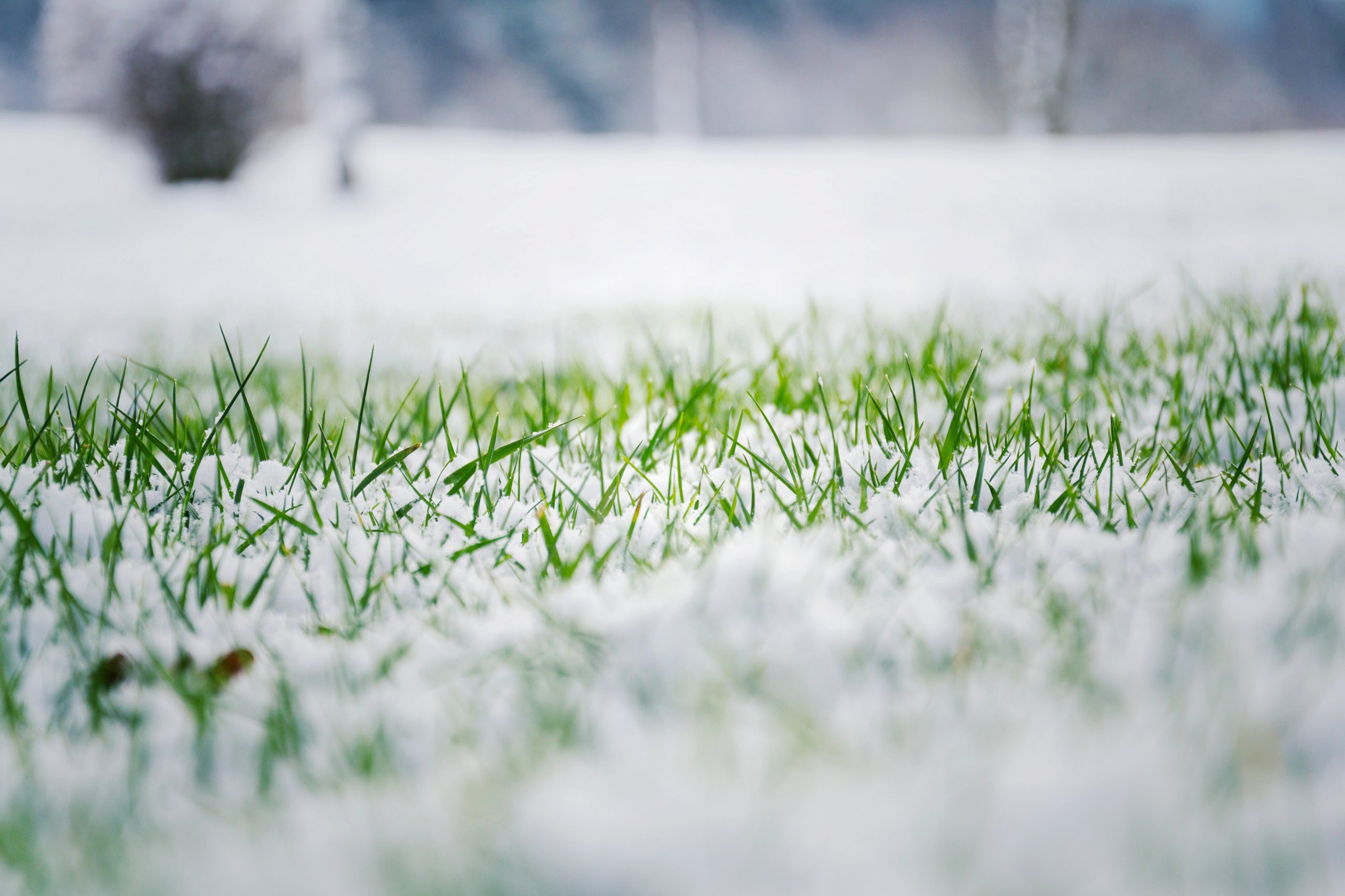When people talk about seeding over the winter or dormant seeding, what do they mean? Dormant seeding is a practice that takes place between the middle of November and early March, depending on your geography. You can seed any time during the winter once the soil temperature drops and stays below 40 degrees. Dormant seeding works anywhere you would typically seed on any height of turf.
When you start to think about a bare area you would like to seed, consider the environment. You want to pick the type of seed that will grow the best in the place where it will be. Fescue, bluegrass, ryegrass, and bentgrass are all good varieties for dormant seeding. Once you’ve selected a variety, you don’t have to worry about coated or uncoated seed. However, coated seed is always more economical.
Like any project you start, preparation is key to the success of dormant seeding. Clear the ground of debris to ensure good seed-to-soil contact. Raking or scratching the surface provides the seed with a nice bed for the winter. After seeding, give the seedbed a light rake for a little more cover.
You can also complete overseeding projects over the winter. This process requires less prep work than a bare-ground application. You can still overseed with a slit seeder if there is one inch or less of frost in the ground. This practice has a high success rate and causes less rutting damage from equipment tires.
When seeding over the winter, it is a good idea to put down about 10 to 15 percent more seed to cover any loss due to run-off or possible non-germination. To protect against runoff, you can use straw mats on hillsides or slopes. Don’t worry about using mats on flat land. As the ground freezes and thaws, the seed moves down right under the surface to prepare for spring germination. Another technique is to wait until right before a snow to throw seed. As the snow melts, it takes the seed down and settles it on top of the soil profile.
Once the seed is down, don’t worry about fertilizing until the soil starts to warm up and the seed germinates. When germination occurs, you can apply a starter fertilizer to give the new plant nutrients and a head-start.
Along with fertilizer, you should wait to apply herbicides until the spring to avoid wasting chemicals. Pre-emergent herbicides that target weed seeds (such as prodiamine and dithiopyr) kill all seeds—including grass seeds. For proper seed establishment, postpone these pre-emergent applications until the following season.
Fall can be stressful, with the worries of mowing, trimming, and leaf removal. Don’t be afraid to push seeding into the winter months. Whether you seed in the fall or over the winter, the results will be very similar by early June. Both fall and dormant seeding are better options than spring seeding because they give the young grass plants the best chance of making it through the summer. Contact your ATS rep for help planning a site-specific dormant seeding project.












